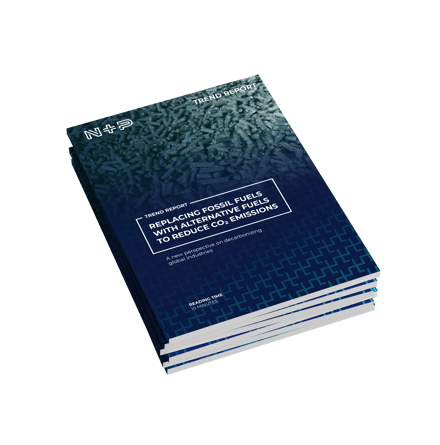RDF a sustainable future
Refuse Derived Fuels: eco-friendly solution for sustainable energy
Refuse Derived Fuels (RDF) is a promising alternative in the quest for sustainable energy sources. RDF is a fuel produced from various waste materials, offering a viable solution for waste management and energy generation.

What is Refuse Derived Fuel (RDF)
RDF is a fuel that is created by processing combustible components from different types of waste, like municipal solid waste (MSW), construction, demolition and industrial waste into an alternative fuel. By transforming this waste into a valuable resource, RDF helps to address two critical challenges: waste management and the demand for sustainable energy.
The production of Refused Derived Fuel (RDF)
The production process of RDF involves several steps to convert waste materials into a high-quality fuel source. These steps typically include waste collection and sorting, screening for recyclable materials, shredding and size reduction, drying and conditioning. The result is a homogeneous and consistent fuel that can be used in major energy-consuming industries like cement, lime and steel factories and energy plants.
Contribution of RDF to the global waste and energy crisis
One of the significant advantages of RDF lies in its positive environmental impact. By diverting waste from landfills, RDF reduces the emission of greenhouse gases and minimizes the strain on limited landfill space. This approach contributes to a circular economy by reusing and repurposing materials that would otherwise end up as waste.
Moreover, RDF offers significant energy benefits. The calorific value of RDF is high, making it a viable substitute for fossil fuels. This high energy content allows industries to reduce their dependence on traditional energy sources while maintaining their operational requirements. RDF can be utilized in various applications such as cement and lime production, power generation and other industrial processes.
Key benefits of using RDF as a renewable energy source
Refuse Derived Fuels (RDF) offer an eco-friendly and sustainable solution for waste management and energy generation. Transforming waste materials into a valuable fuel source helps reduce environmental pollution and addresses the growing energy demands of various industries. The adoption of this fuel not only contributes to a circular economy but also enables businesses to achieve their sustainability goals while enjoying the economic advantages of a renewable energy source.
Adoption of RDF in energy consuming industries
Cement industry and refuse derived fuels
Since the eighties, RDF is increasingly popular as an alternative fuel in the cement industry. Cement production requires a substantial amount of energy, and the use of RDF can significantly reduce carbon emissions and production costs. By replacing traditional fossil fuels with RDF, cement manufacturers can contribute to sustainability goals while maintaining the required high temperatures for cement kilns.
How other industries can use this
Beyond power generation and cement manufacturing, RDF has the potential to be used in various other industries. Steel production, for instance, can benefit from RDF as a substitute for fossil fuels in blast furnaces and electric arc furnaces. The versatility and adaptability of RDF make it an attractive choice for industries looking to reduce their carbon footprint and promote sustainable practices.
What is the difference between RDF and SRF?
Though both these fuels derive from the same initial materials, the degree of refinement distinguishes them. Solid Recovered Fuel (SRF) typically undergoes a high level of purification, generally produced in line with the precise specifications of the companies that will consume it. On the other hand, Refuse-Derived Fuel (RDF) demands a lesser degree of refinement to meet the final users' requirements.
However, the boundary between the traditionally defined RDF and SRF is increasingly becoming vague as new processing technologies emerge. These require a fuel with characteristics that lie in between what was formerly labeled as RDF and SRF.

Ready to replace fossil fuels?
Read about reducing CO₂ emissions and discover a new perspective on decarbonizing global industries.
We repurpose waste
into sustainable resources.